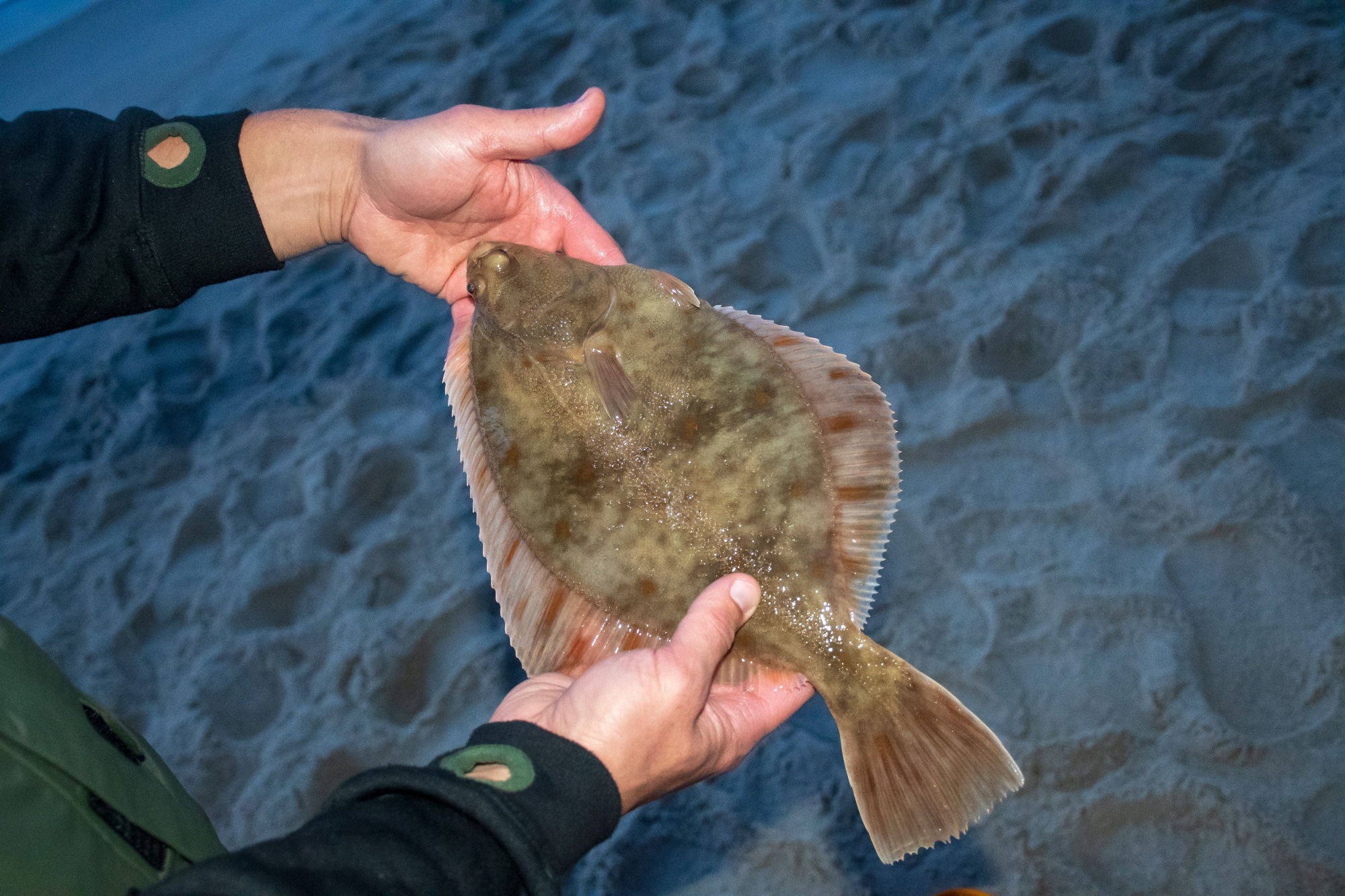Synergistic winter flounder antimicrobial peptides unveil new path to enhanced bactericidal therapy
In a recent study published in NPJ Antimicrobials and Resistance, a group of researchers investigated the synergistic action of six winter flounder (WF) antimicrobial peptides (AMPs) against bacterial pathogens, uncovering the therapeutic potential of combining potent and weakly active peptides.
 Study: Synergy between Winter Flounder antimicrobial peptides. Image Credit: MicheleUrsi/Shutterstock.com
Study: Synergy between Winter Flounder antimicrobial peptides. Image Credit: MicheleUrsi/Shutterstock.com
Background
Although AMPs offer a promising alternative to traditional antibiotics, and a few exhibit strong bactericidal properties, the role of less active ones remains ambiguous.
For example, the WF produces pleurocidin, an AMP with membrane-damaging and intracellular targeting abilities that could revolutionize therapeutic approaches and counteract antibiotic resistance. However, its interactions and effects on bacterial elimination warrant further investigation.
About the study
In the present study, peptides were sourced from Cambridge Research Biochemicals, and further refined with water/acetonitrile gradients. Lipids came from Avanti Polar Lipids, Inc. and were used unpurified.
To test the antibacterial properties, a modified broth microdilution method was employed. The minimum inhibitory concentration (MIC) was assessed using a Clariostar plate reader.
Tekin et al.'s method, was used to measure antibacterial activity in triplicate. Peptide concentrations inhibiting 10% of bacterial growth were used in synergy screens. Combinations of peptides were evaluated through an adjusted MIC method.
The Fractional Inhibitory Concentration (FIC) was determined, with particular values indicating synergistic effects. Standard microdilution Chequerboard assays measured synergy, defining growth/no growth and calculating the FIC.
Using multiple antibiotic and bacterial strains, the in vitro pharmacodynamic assays observed bacterial behavior under varying antimicrobial exposure. The bacterial growth rate under the antimicrobial influence was plotted and analyzed. Galleria mellonella larvae tested the antimicrobial efficiency of various treatments on a burn wound infection model.
Nuclear magnetic resonance (NMR) structure determination involved peptide samples mixed with specific chemical compounds, with NMR spectra obtained from Bruker spectrometers. The resulting data were processed and analyzed using particular software.
Molecular dynamics simulations were conducted using high-performance systems, analyzing peptides in lipid environments using the chemistry at Harvard macromolecular mechanics 36 (CHARMM36) force field. The peptide structures were introduced above lipid bilayers, with various factors adjusted for accurate simulations.
The researchers used diphytanoyl chain lipids to create giant unilamellar vesicles (GUVs). These were formed utilizing the electroformation method. Bilayers were then made and tested with peptides, and data was recorded and analyzed.
Study results
In the present study, the researchers examined the antimicrobial activity of six WF AMPs on bacterial isolates. Two representative Vibrio isolates were included due to the marine origin of WF peptides. It was observed that WF2 (pleurocidin) and WF1a-1 showed high antimicrobial potency.
D-analogues were prepared to further analyze their activity against P. aeruginosa isolates. The findings showed D-WF1a-1's performance closely matched or slightly exceeded D-pleurocidin. However, the antibacterial activity of WF4 was predominantly against Gram-negative bacteria, while WF1, WF1a, and WF3 showed minimal activity.
Three methods were employed to examine synergy among WF AMPs. Initially, the method of Tekin et al. was utilized, identifying synergistic two-way combinations of several AMPs. When examining higher-order conditions, the synergy emerged from the entire combination rather than individual pairings.
Subsequently, researchers sought to identify probable synergistic binary combinations for antibiotic-resistant isolates using two different screening methods. The results showed nine of fifteen two-way WF AMP combinations displayed strong synergy, dependent on the bacterial isolate tested.
Notably, each WF AMP participated in at least one synergistic combination. Lastly, researchers explored whether D-WF1a synergizes with D-pleurocidin or its analog, D-pleurocidin-KR.
Beyond merely considering gains in antibacterial potency, the researchers sought to understand the behavioral changes in WF AMPs due to synergy. Various studies had noted increased cooperativity in bactericidal killing rates for multi-AMP combinations.
The current study tested the in vitro desirable pharmacodynamic (PD) profile of WF2 against its synergistic partners. The findings demonstrated that all WF AMPs and their combinations were substantially more bactericidal than clinically used antibiotics, killing bacteria in minutes compared to antibiotics which took hours.
They did not test WF1a and WF3's antibacterial potency individually. However, combining them with pleurocidin/WF2 enhanced bactericidal cooperativity. This effect varied depending on bacterial resistance and the peptide enantiomer used.
The combination of WF AMPs showed a significant enhancement in their therapeutic efficacy, according to research conducted on an invertebrate burn wound infection model using Galleria mellonella larvae.
This model was employed to test the therapeutic performance of various antibiotic combinations. Among the antibiotics tested, gentamicin demonstrated strong protective effects as a standalone treatment, outperforming other antibiotics like ciprofloxacin, imipenem, and meropenem.
However, an intermediate dose of WF2, known as pleurocidin, was just as effective as gentamicin at a specific concentration. Interestingly, the combined low doses of WF2 with either WF1a or WF3 resulted in protection levels similar to gentamicin, even though these peptides provided no protection individually.
A combination of WF3 and WF4 also showcased complete protection, contrasting their ineffectiveness when used alone.
The research further delved into the molecular intricacies behind the synergistic effect of these WF AMPs. It was observed that although certain peptides shared sequence similarities, their antibacterial properties and synergistic potential differed markedly.
This led to the hypothesis that the mode of action might involve the formation of aggregates or hetero-oligomers, given that single AMPs cannot form pores in lipid membranes individually.
The structural characteristics of WF peptides were analyzed, revealing that they can adopt specific conformations, with some peptides exhibiting more hydrophobic or hydrophilic tendencies depending on the environmental pH.
Another significant finding was the conformational flexibility of these peptides, as they could assume both α-helix and PII conformations. These conformations were inferred through techniques like far-ultraviolet circular dichroism and NMR spectroscopy.
Furthermore, molecular dynamics simulations provided insights into the peptides' interaction with bacterial plasma membranes. Notably, differences in bilayer penetration and lipid chain disordering were identified among the WF AMPs, with some showing deeper penetration in specific bilayer conditions.
When combined in synergistic pairs, these peptides exhibited altered penetration, acyl chain disordering, and peptide-lipid hydrogen bonding, highlighting the complex molecular interplay leading to enhanced therapeutic outcomes.
Conclusion
The research explored the atomic interaction of WF AMP with membranes, aiming to relate it to bactericidal activity and understand its role in antimicrobial potency. Although pleurocidin can penetrate bacteria, its membrane disruption properties are noteworthy.
The team identified the minimum concentration of peptide-inducing ion conductance using patch-clamp experiments. Findings showed that while WF AMP's ability to penetrate and disorder lipids varied, this didn't directly relate to antibacterial strengths.
Different WF AMPs showed varied activities and effects on modeled bacterial membranes. Combining WF1a and WF2 led to enhanced ion conductance, suggesting a synergistic relationship.
-
Clarke, M. et al. (2023) "Synergy between Winter Flounder antimicrobial peptides", npj Antimicrobials and Resistance, 1(1). doi: 10.1038/s44259-023-00010-7. https://www.nature.com/articles/s44259-023-00010-7
Posted in: Medical Science News | Medical Research News | Medical Condition News | Disease/Infection News
Tags: Antibiotic, Antibiotic Resistance, Bacteria, Burn, Ciprofloxacin, Efficacy, Helix, in vitro, Intracellular, Ion, Lipids, Membrane, Peptides, pH, Research, Software, Spectroscopy, Wound

Written by
Vijay Kumar Malesu
Vijay holds a Ph.D. in Biotechnology and possesses a deep passion for microbiology. His academic journey has allowed him to delve deeper into understanding the intricate world of microorganisms. Through his research and studies, he has gained expertise in various aspects of microbiology, which includes microbial genetics, microbial physiology, and microbial ecology. Vijay has six years of scientific research experience at renowned research institutes such as the Indian Council for Agricultural Research and KIIT University. He has worked on diverse projects in microbiology, biopolymers, and drug delivery. His contributions to these areas have provided him with a comprehensive understanding of the subject matter and the ability to tackle complex research challenges.